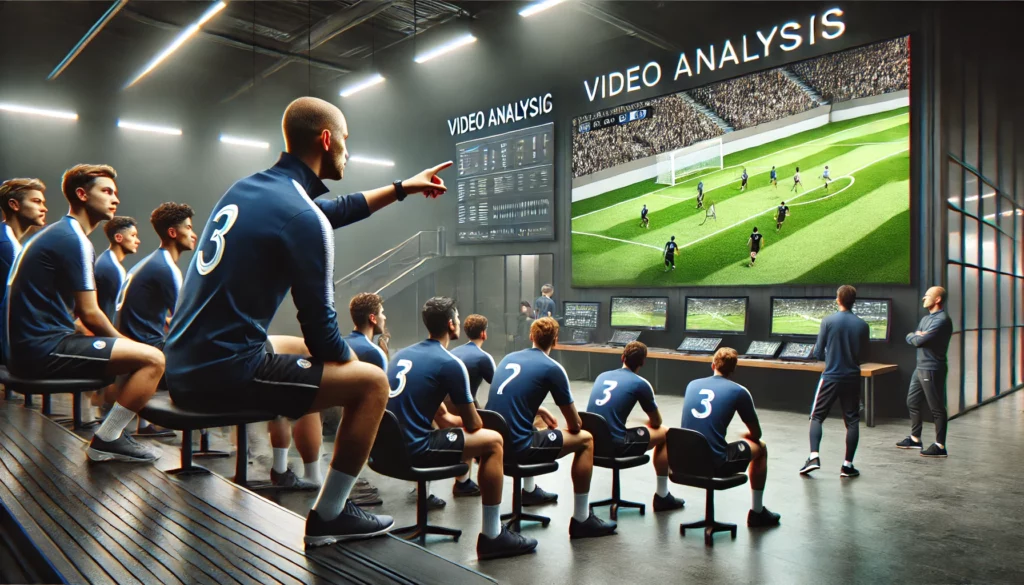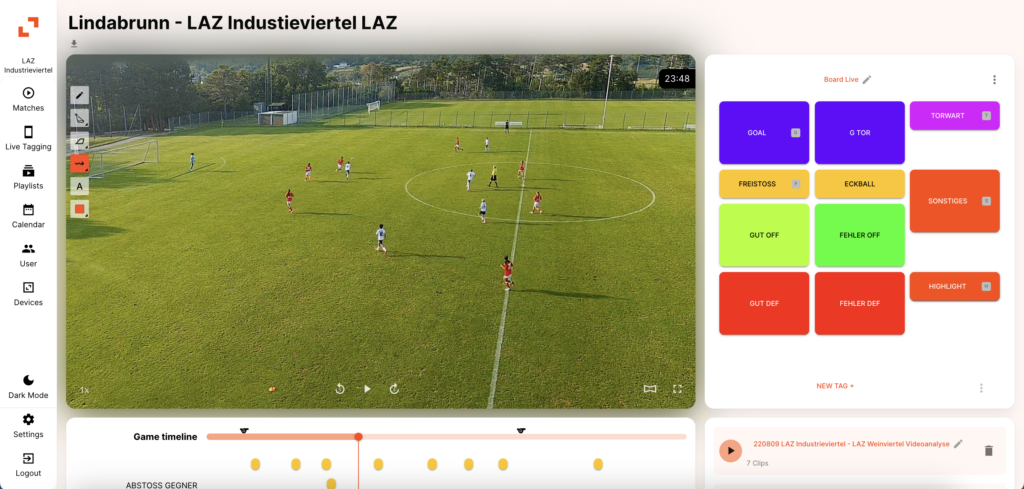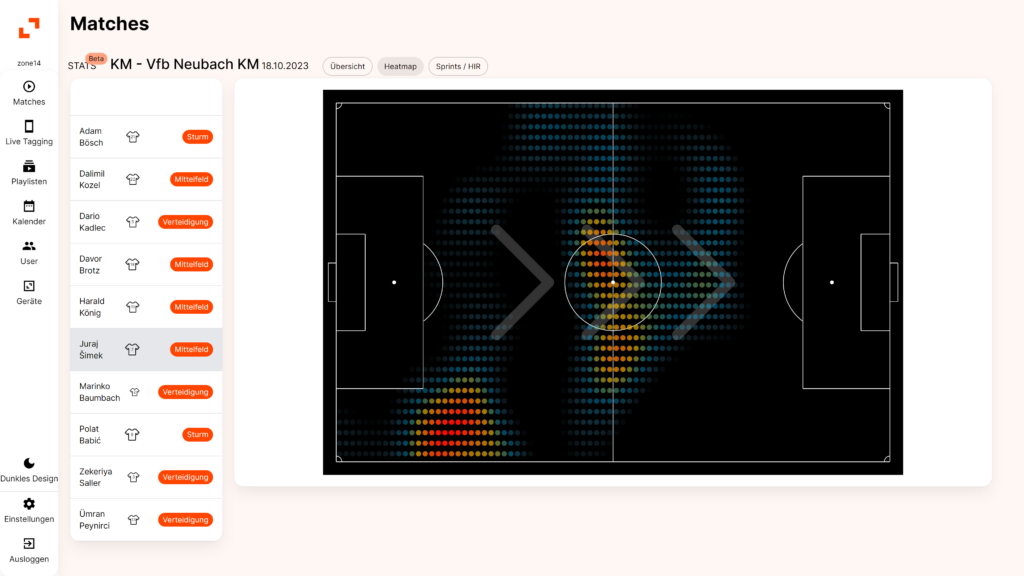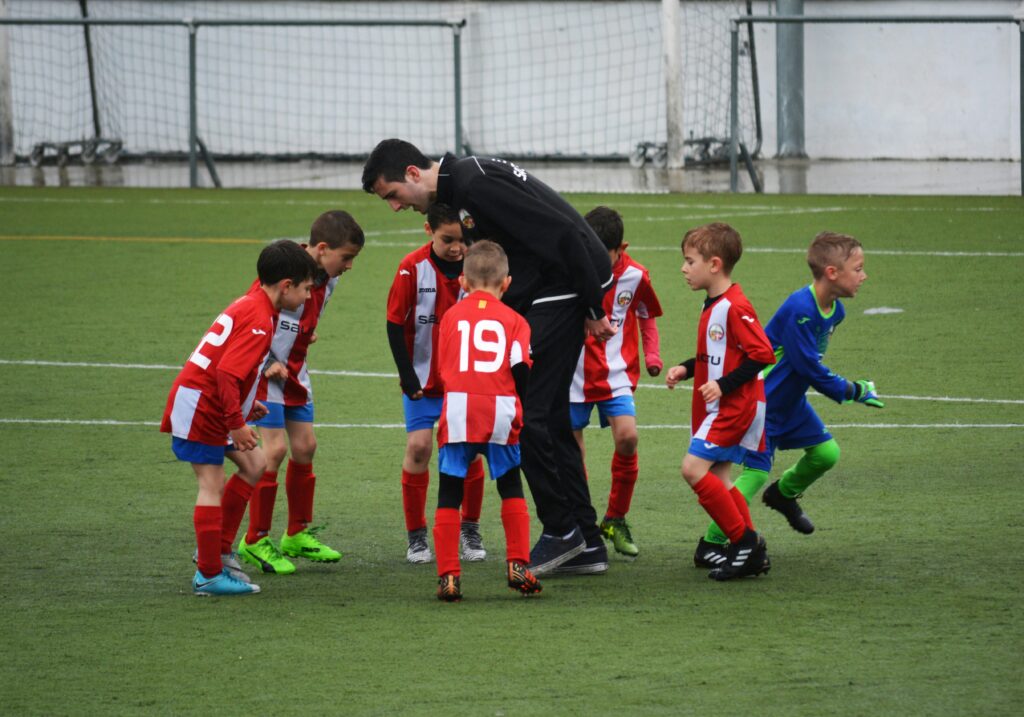
In today’s football landscape, where marginal gains often decide outcomes, the ability to understand and improve individual player performance has never been more important. From grassroots to professional levels, individual performance analysis equips players and coaches with actionable insights to unlock their potential and enhance team dynamics. Central to this evolution is video analysis, a powerful tool that provides detailed, visual feedback on every aspect of a player’s game.
This blog explores the importance of individual performance analysis, its critical role in player development, and the tools that make the process efficient and impactful. Whether you’re coaching youth players or managing a professional squad, detailed player analysis is always an impactful tool in success.

Football may be a team sport, but the contributions of each player are vital to collective success. Analysing an individual’s performance allows coaches to focus on areas of improvement and highlight strengths. This personalised attention goes beyond traditional team tactics, helping players refine their skills, improve decision-making, and better understand their role within the team structure.
For youth players, the importance of individual performance analysis is magnified. At this stage, football is as much about learning as it is about competing. Personalised analysis helps young athletes build foundational skills, develop a tactical understanding of the game, and establish a mindset geared toward continuous improvement and development. The ability to show a young player exactly where they excel and where they need to improve not only accelerates their development but also builds confidence and trust in their environment.
In the past, coaches relied heavily on verbal feedback and observation during matches and training. While these methods remain valuable, they often lack the precision and clarity needed for clearly actionable feedback. Video analysis bridges this gap by allowing players to see their performance objectively, frame by frame.
Video analysis is particularly effective in youth development, where learning is visual and hands-on. A young defender, for example, can watch clips of their positioning during set-pieces to understand why they lost a header, while a striker can analyse their decision-making in one-on-one situations. These visual examples resonate more than verbal explanations alone, making it easier for players to grasp concepts and apply them in future games.
Beyond individual learning, video analysis also enhances communication between coaches and players. One-on-one feedback meetings, facilitated by video clips, provide an opportunity to discuss specific moments in detail. These meetings help build trust between the coach and player, creating a space where constructive criticism is welcomed and progress is celebrated. For youth players, these sessions can be transformative, offering tailored guidance that is rarely possible in broader team settings.


While video analysis provides a visual narrative, the integration of performance data offers measurable depth to the analysis. Metrics such as running distance covered, number of runs give objective insights that complement the qualitative feedback from video.
For instance, a visual heatmap showing a midfielder’s activity can reveal areas of the pitch they favoured, but pairing this with video footage shows why that positioning worked, or didn’t work within the team’s tactics. Similarly, if a player’s passing accuracy is lower than expected, analysing the video can reveal whether this was due to technical issues, pressure from opponents, or poor decision-making.
By combining data and video analysis, coaches can provide players with a complete picture of their performance. This holistic approach ensures that feedback is both accurate and actionable, helping players address weaknesses and build on their strengths.

For youth players, individual performance analysis is as much about education as it is about evaluation. At this stage, players are not only honing their technical skills but also developing their football intelligence and understanding of the game.
Video analysis helps young players learn visually, breaking down complex ideas into digestible segments. For example, a winger might struggle to maintain width during attacks. Through video analysis, they can see how their positioning impacts the team’s ability to stretch the opposition defence, making the importance of this tactical concept clear.
Beyond the tactical and technical aspects, individual analysis also plays a significant role in confidence building. Highlighting a player’s strengths, such as well-timed tackles or intelligent movement, reinforces positive behaviours and motivates them to continue improving. For players who may be struggling, personalised feedback can identify specific areas to work on, giving them a clear path to progress.
Moreover, youth development is not just about the player’s current performance but also about setting them up for long-term success. By tracking their development over time through consistent analysis, coaches can create tailored plans that evolve as the player grows and matures.

The process of individual match analysis involves several steps, all designed to provide a clear and actionable evaluation of a player’s performance. Here’s how it typically works:
Manually analysing individual performances can be a time-intensive process, particularly for teams that lack dedicated analysts. This is where video analysis software becomes invaluable.
With tools like Tagging Boards coaches can mark key events during matches in real time, making it easier to locate and review specific moments later. Organisation features allow analysts to sort clips by player, match phase, or skill category, ensuring that feedback is focused and relevant.
Additionally, modern platforms often include collaborative features, such as cloud-based sharing, enabling players and coaches to share and review analysis remotely. This is particularly useful for youth teams, where time constraints might limit the opportunity for in-person review sessions. By streamlining the analysis process, software not only saves time but also makes individual feedback more accessible and impactful.
At zone14 our mission has always been to democratise sports technology in football, make tools like individual player performance analysis available to clubs of all levels, not just the pros!
The zone14 REPLAY platform makes organising and sharing your analysis clips simple. With completely customisable tagging boards, you can easily mark key events and then organise them into individual playlists to share with your players either directly through our platform or simply by downloading the playlists.
Thanks to the All-In-One Camera System, REPLAY and STATS from zone14, grassroots teams are now able to gain the advantage of performance analysis as seen by the pros! Click here to get in touch and find out how you can elevate your team’s performance together with zone14.
The evolution of football has made individual performance analysis an indispensable part of the game. By combining video analysis with data and delivering personalised feedback, coaches can unlock the full potential of their players. Whether you’re working with youth players just starting their football journey or seasoned professionals seeking an edge, understanding and leveraging individual analysis is key to success.